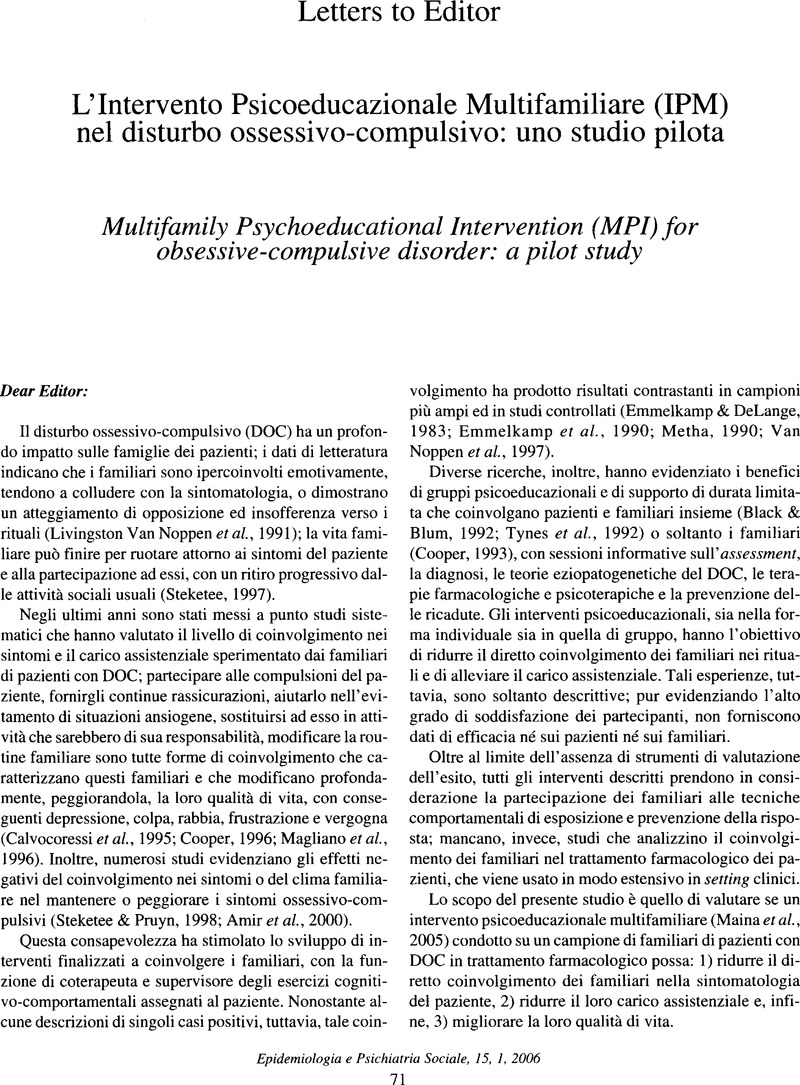Crossref Citations
This article has been cited by the following publications. This list is generated based on data provided by Crossref.
Albert, Umberto
Brunatto, Cinthia
Aguglia, Andrea
Maina, Giuseppe
Rocca, Giuseppe
and
Bogetto, Filippo
2009.
Quality of life of relatives of patients with Obsessive-Compulsive Disorder: relation to family accommodation and other socio-demographic and clinical characteristics.
Epidemiologia e Psichiatria Sociale,
Vol. 18,
Issue. 3,
p.
255.
Palardy, Véronique
El-Baalbaki, Ghassan
Fredette, Catherine
Rizkallah, Elias
and
Guay, Stéphane
2018.
Social support and symptom severity among patients with obsessive-compulsive disorder or panic disorder with agoraphobia: A systematic review.
Europe’s Journal of Psychology,
Vol. 14,
Issue. 1,
p.
254.
Albert, Umberto
Marazziti, Donatella
Di Salvo, Gabriele
Solia, Francesca
Rosso, Gianluca
and
Maina, Giuseppe
2019.
A Systematic Review of Evidence-based Treatment Strategies for Obsessive- compulsive Disorder Resistant to first-line Pharmacotherapy.
Current Medicinal Chemistry,
Vol. 25,
Issue. 41,
p.
5647.
Pontillo, Maria
Demaria, Francesco
Tata, Maria Cristina
Averna, Roberto
Gargiullo, Prisca
Pucciarini, Maria Laura
Santonastaso, Ornella
Boldrini, Tommaso
Tozzi, Alberto Eugenio
and
Vicari, Stefano
2020.
Clinical significance of family accommodation and parental psychological distress in a sample of children and adolescents with obsessive-compulsive disorder aged 8-17 years old.
Italian Journal of Pediatrics,
Vol. 46,
Issue. 1,
Reuman, Lillian
and
Thompson-Hollands, Johanna
2023.
Family accommodation in PTSD: Proposed considerations and distinctions from the established transdiagnostic literature..
Clinical Psychology: Science and Practice,
Vol. 30,
Issue. 4,
p.
453.



